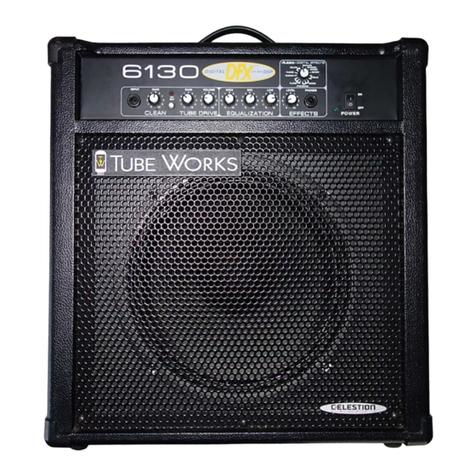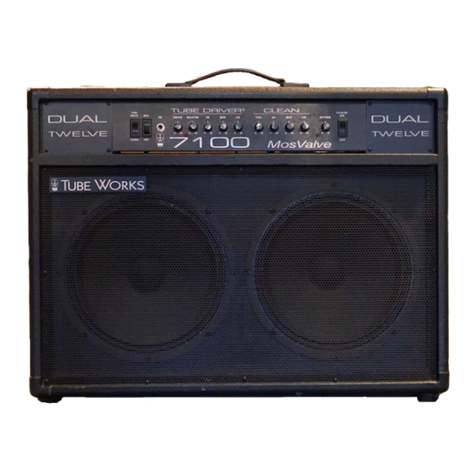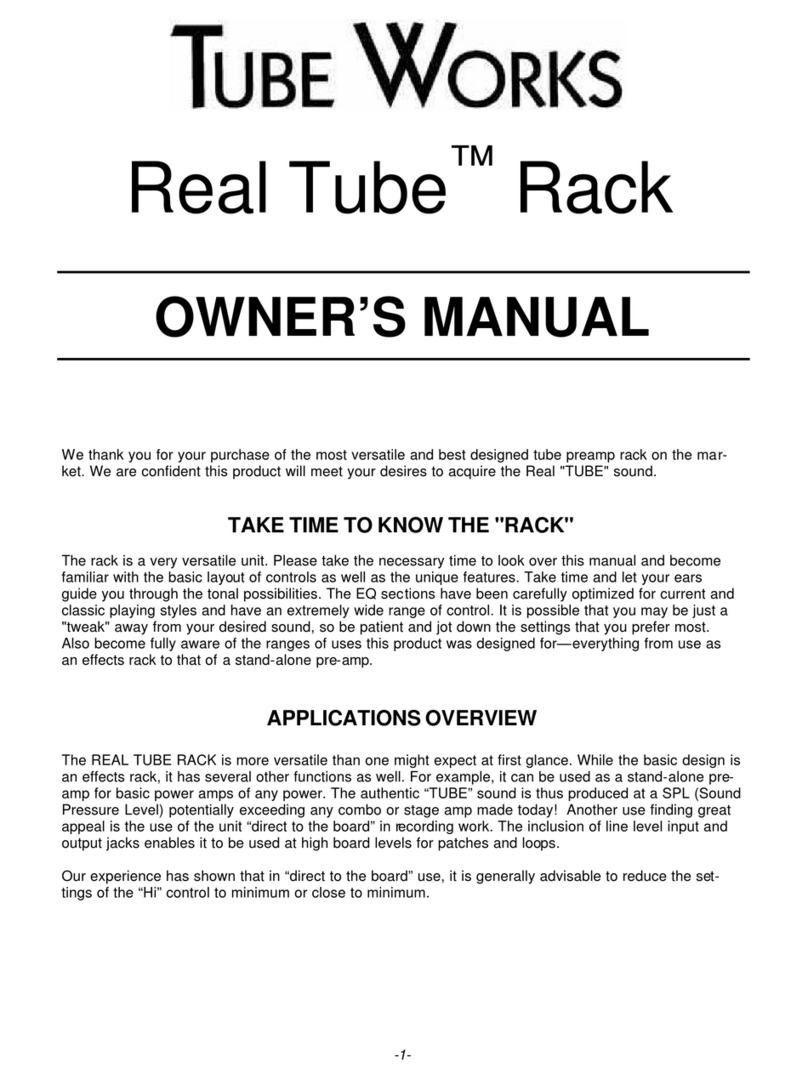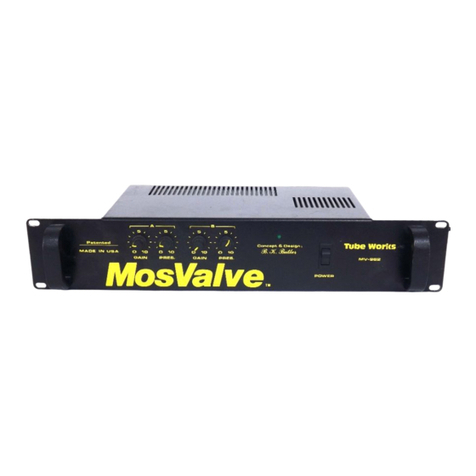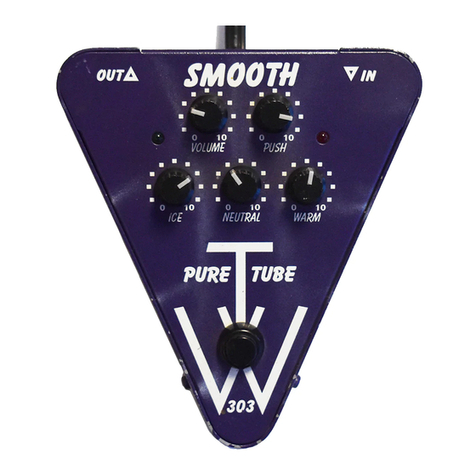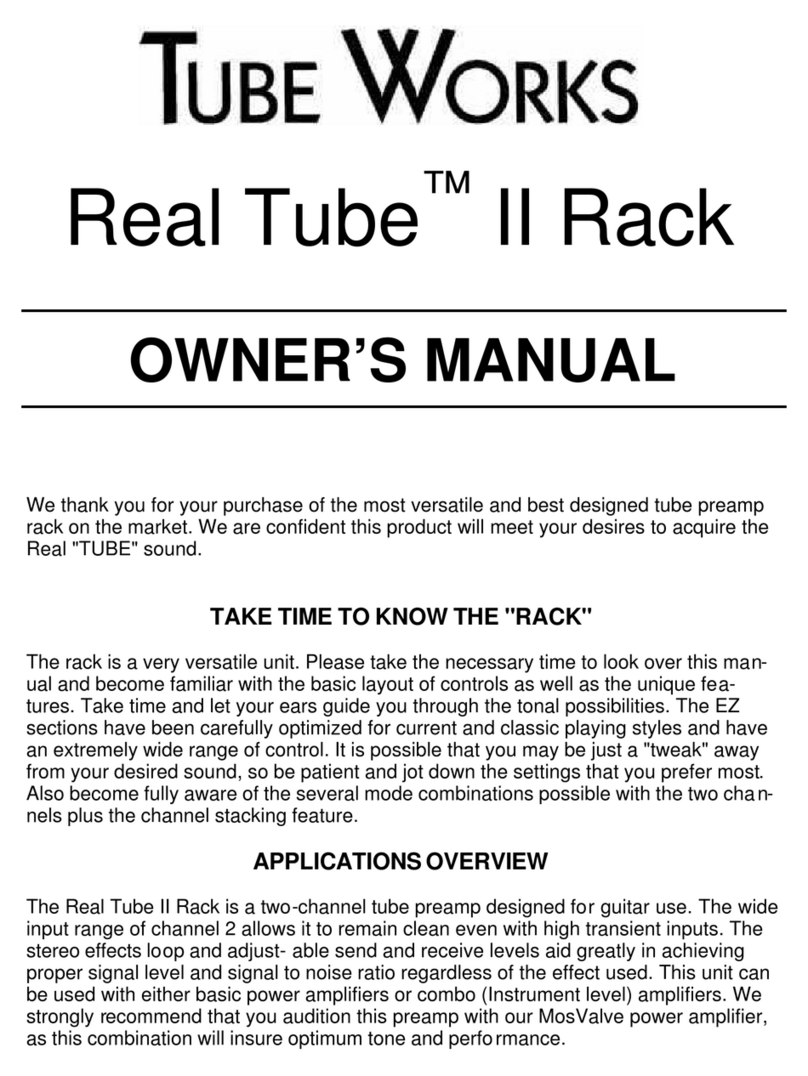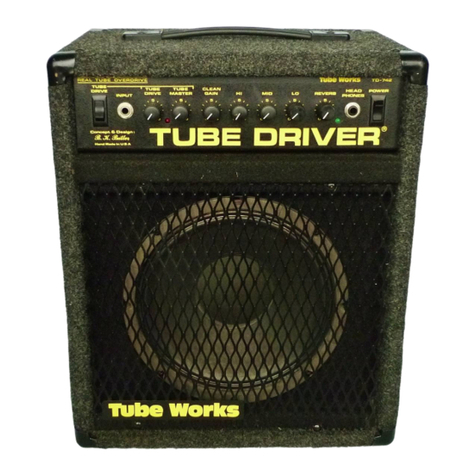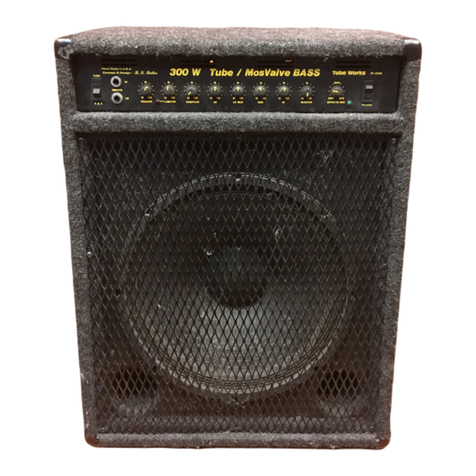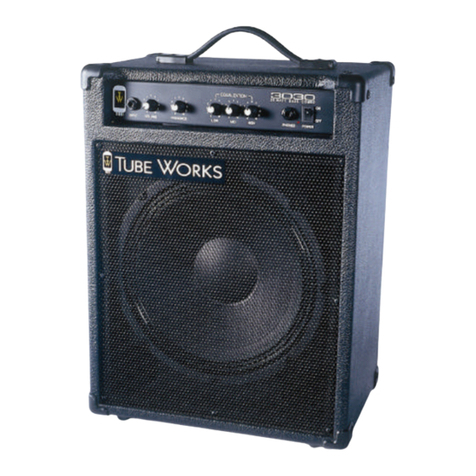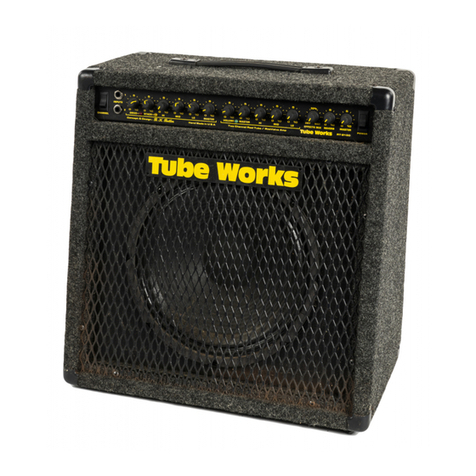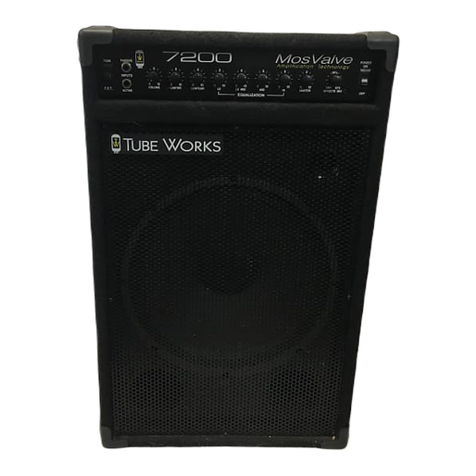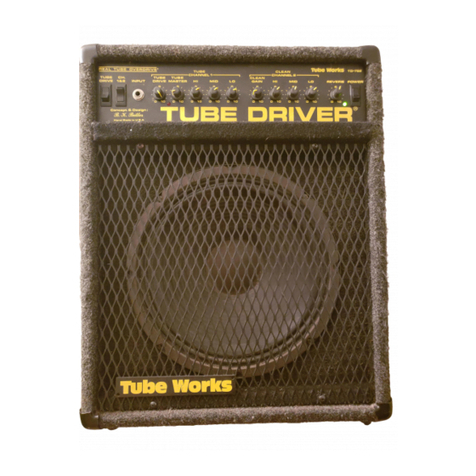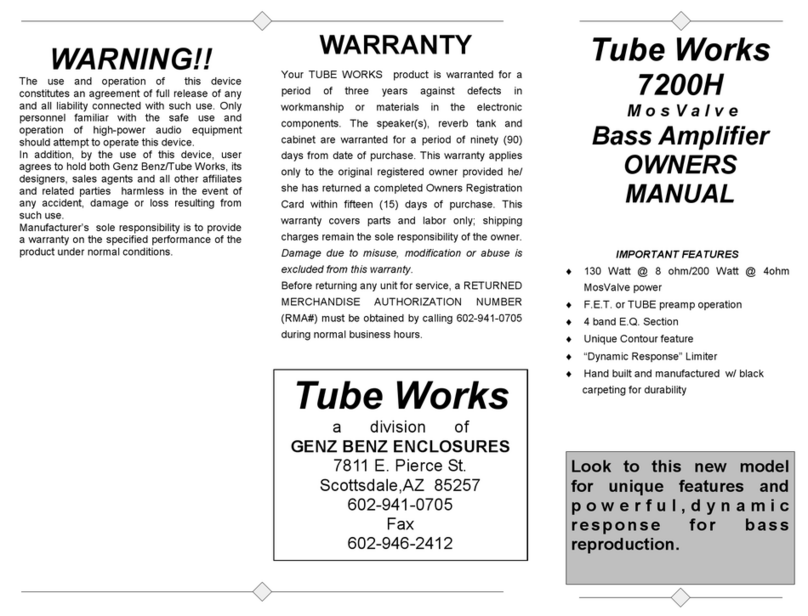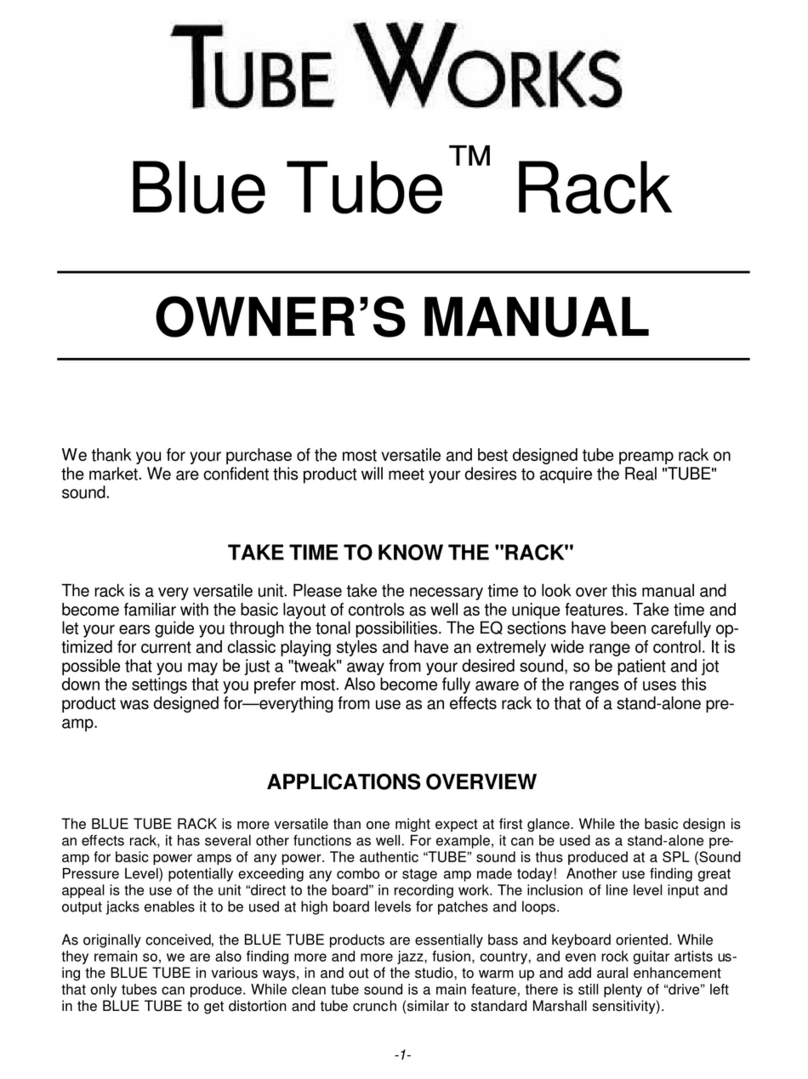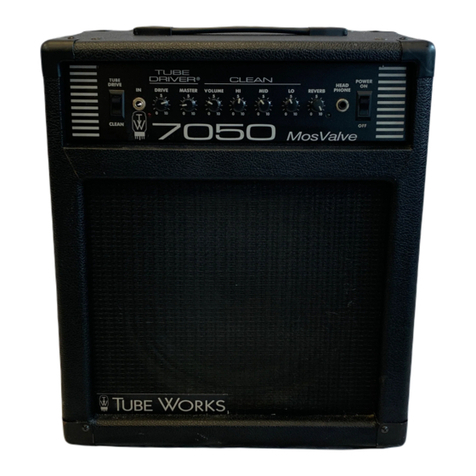
-3-
POWER SWITCH —Supplies main AC power to the unit. Either LED or both light (depending
on mode selected) when power is "on."
REAR PANEL LAYOUT(Left to Right)
LINE CORD —Be sure to connect the unit to the proper voltage source. The current draw is
negligible, a maximum of only 10 watts is consumed, but the unit can be damaged if proper
voltage ratings are not adhered to.
LINE OUT JACK (Ch A) —Line level output jack. This level will drive basic power amps, and
operate at nominal line levels (0 dBm). Use Channel A for MONO operation, however an iden-
tical signal is available at Channel B line output in MONO operation.
INST. OUT JACK (Ch A) —Instrument (guitar) level output level jack. This output should be
used to connect the unit to the input of a regular combo or stage amplifier instrument input.
LINE OUT JACK (Oh B) —Line level output jack. This level will drive basic power amps, and
operate at nominal line levels (0 dBm).
INST. OUT JACK (Ch B) —Instrument (guitar) level output level jack. This output should be
used to connect the unit to theinput of a regular combo or stage amplifier instrument input.
EFFECTS SEND LEVEL —Adjusts level output for effects send.
EFFECTS SEND JACK —Effects send (OUT).
EFFECTS RECEIVE LEVEL (Ch A) —Adjusts receive sensitivity for Channel A effects.
EFFECTS RECEIVE JACK (Ch A) —Effects receive jack for Channel A. NOTE: Use only this
jack for receiving MONO effects. The signal will automatically be fed into Channel B receive.
Both receive level controls can be adjusted (Use both A and B input jacks for receiving true
stereo or “panning” effects).
EFFECTS RECEIVE JACK (Ch B) —Effects receive jack for Ch B. NOTE: True Stereo opera-
tion is obtained when using a stereo or “panning” effects device plugged into both A & B Ef-
fects Receive Jacks. Stereo outputs A & B (both line and instrument level) can then be routed
to either a stereo power amp, or two separate combo amps, etc.
DRY OUT JACKS —Both Line and Instrument level output jacks for dry (before and inde-
pendent of effects section) signal. These outputs can be used for monitoring and/or additional
effects, remote patching applications, etc.
FT. SW. STACK & CHANNEL JACKS —Permits the use of standard “on-off” footswitches to
remotely switch the “Stack” and “Channel” functions. (Front panel “Stack” and “Channel”
switches are automatically overridden with footswitch use.) NOTE: These jacks are Positive
signal-to-ground switching logic and shouldoperate with MIDI switchers, which use positive
open collector switching schemes.
